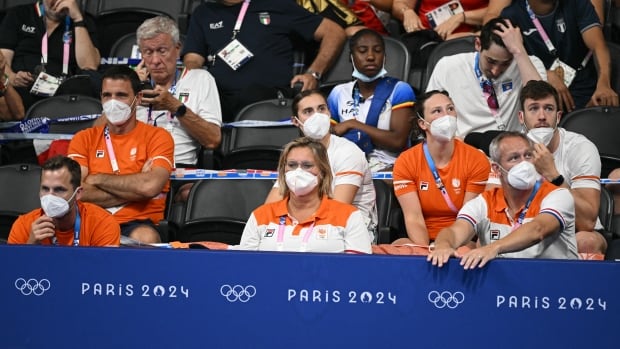Warning: This story details of intimate partner violence and may affect those who’ve experienced or been impacted by it.
Lydia was just five years old, yet vividly remembers the knock on the door of her family’s southwestern Ontario home that would change the trajectory of her life.
Two police officers and a social worker showed up shortly after violence ensued between Lydia’s mother and her then intimate partner. It marked the beginning of Lydia’s journey into the child welfare system.
“There was a lot of fighting, door slamming and yelling. My sibling and I were hiding in a bedroom at the time and we were just really scared,” Lydia, 29, said in an interview with CBC.
“We didn’t know what was happening, but I remember climbing up on this little step stool to the top drawer of a dresser, where we found a small child-sized belt and we went out to the living room to give that to our mom, thinking that’s what she could use to protect herself.”
Lydia is sharing her story to shed light on how witnessing domestic violence impacts children and youth, and systemic barriers preventing them from accessing adequate support.
CBC has agreed not to use the woman’s real name and to refer to her as Lydia due to concerns for her and her family’s safety.
Lydia said that before she was put in foster care, her childhood was “very transient” — she and her mom moved frequently and lived in different shelters around London. After the incident involving her mother’s partner, Lydia spent the rest of her childhood and adolescence in different foster homes.
“As an adult, it’s very hard to create trusting connections and bonds with people when that’s broken from a very early age. When you’re in the system and have multiple placements, which I did, that bond and connection is always changing.”
Partner-violence calls to child agencies ‘exploding’
Intimate partner violence (IPV) has been a large driver of calls to child welfare agencies across Canada, but reports have skyrocketed since the COVID-19 pandemic, said Valerie McMurtry, president and CEO of the Children’s Aid Foundation of Canada (CAFDN)
“At a local level with agencies we work with, we’ve seen IPV become the number one reason that a child protective service is called. It’s really exploding, ” she said.
“During COVID, things changed a lot, so the number one reporting source is actually the police, and those rates are rising as much as 40 per cent across all community agencies.”
McMurtry said although the welfare system is great at providing immediate safety to children in imminent physical danger, it’s not equipped to deal with issues of “chronic family breakdowns” such as intimate partner violence, and the gap is growing.

Child exposure to domestic violence is one of the biggest risk factors of negative outcomes for children, such as mental and physical health challenges and poor concentration in school, said Katreena Scott, academic director for the Centre for Research and Education on Violence Against Women and Children at London’s Western University.
Children removed from their homes and put in foster care or who have to move around for safety risk further harm, said Scott, a clinical psychologist.
“It may mean victims have to flee so children have to change schools — their friendships are disrupted. Although this is really important for child safety, it isn’t great for their development because they thrive on having consistent and predictable parents and environments,” she said.
Children who’ve grown up in families where there’s domestic violence always vow that when they get into relationships or become parents, they’re going to create a different environment. But if there hasn’t been a chance to process what happened and heal, they lack skills and emotional regulation, and ironically fall into the same patterns.– Katreena Scott, clinical psychologist
“When their lives are disrupted for their own safety, it means their development is compromised. Children know a lot more than adults think … they have to because it’s part of what they need to do to survive in that family.”
This can create generational cycles of violence in families, resulting in people using anger and abusive behaviour, or not recognizing the warning signs that they’re in a violent relationship because it’s been normalized in childhood, said Scott.
“Children who’ve grown up in families where there’s domestic violence always vow that when they get into relationships or become parents, they’re going to create a different environment,” she said. “But if there hasn’t been a chance to process what happened and heal, they lack skills and emotional regulation, and ironically fall into the same patterns.”
She said the child welfare system lacks intervention services that work with parents and children, both individually and together, to change behaviour patterns and support families, through collaborative efforts between child protective services and community agencies.
Early intervention program aims to prevent violence
Scott’s research focuses on early intervention with men at risk of perpetrating violence against their partners or children. She also developed the program Caring Dads, which is offered across Canada, the U.S., Australia and Europe.
Scott said the evidence-based program has been shown to decrease hostility in fathers and help lower rates of re-referral to child protective services. One of its sites is in Oxford County, east of London.
It’s one of two programs funded by a $10 million-investment in CAFDN’s five-year Safe at Home initiative, which operates in nine communities in Ontario and Manitoba. The other, Mothers in Mind, helps women who’ve experienced violence and have children under four years old manage stress and respond in a healthy way to their child needs.
Both programs also have Indigenous proponents to them.
For Lydia, the path to healing wasn’t easy — she underwent lots of therapy and was helped by being placed in one foster home long term, with people she now refers to as her family. She’s now been married four years, has two young children and has a great relationship with her mom.
Lydia said she wants to see more help for parents with experiences similar to those of her mom, who “did the best she could despite not having any supports while managing what she experienced.”
For anyone affected by family or intimate partner violence, there is support available through crisis lines and local support services. If you’re in immediate danger or fear for your safety or that of others around you, please call 911.





